Body length: 8–27 mm.
Eyes: eye interommatidial setaeseta:
a sclerotized hair-like projection of the cuticle
absent, eye entire/shallowly emarginateemarginate:
notched at the margin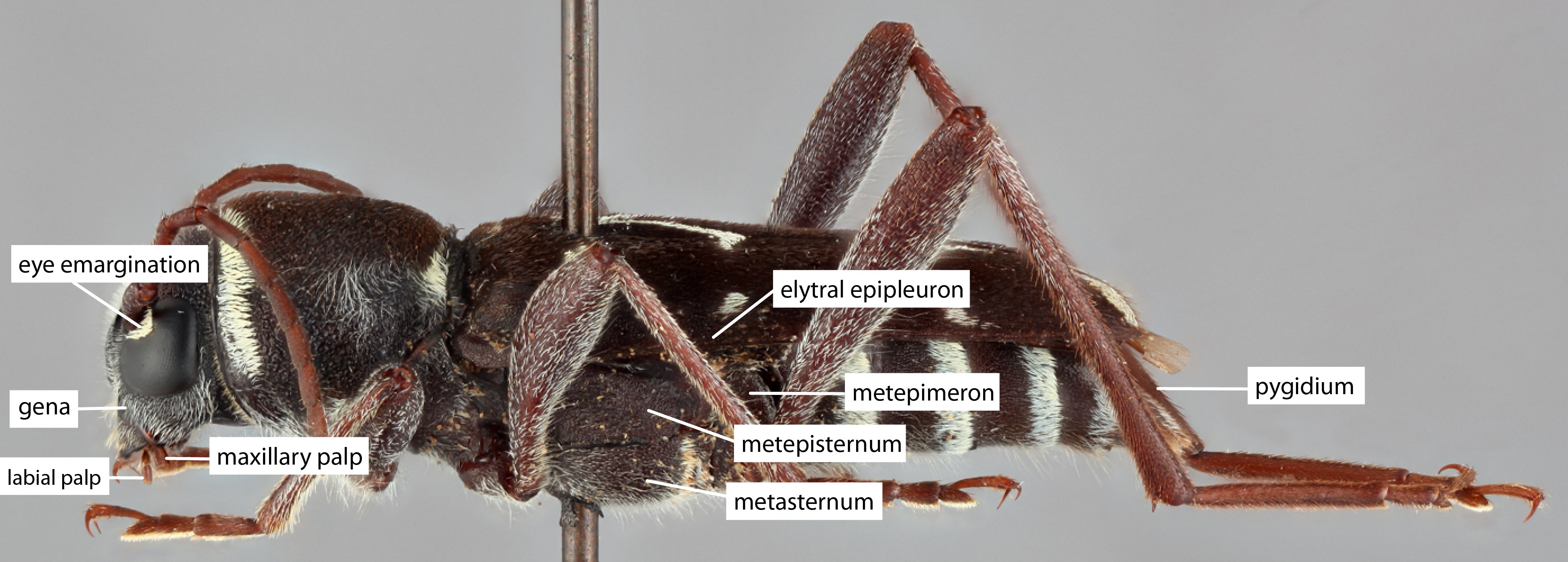 , eye ommatidial density fine.
, eye ommatidial density fine.
Antennaeantenna:
in larval and adult insects, paired segmented appendages, borne one on each side of the head, functioning as sense organs and bearing a large number of sensilla
: antennal length barely surpassing pronotumpronotum:
the upper and dorsal part of the prothorax
or shorter or reaches between basebase:
the part of any appendage or structure that is nearest the body
and end of elytraelytron:
the leathery forewing of beetles, serving as a covering for the hind wings, commonly meeting opposite elytron in a straight line down the middle of the dorsum in repose
, antennal flagellar segments elongateelongate:
much longer than wide
, scapescape:
the first proximal segment of the antenna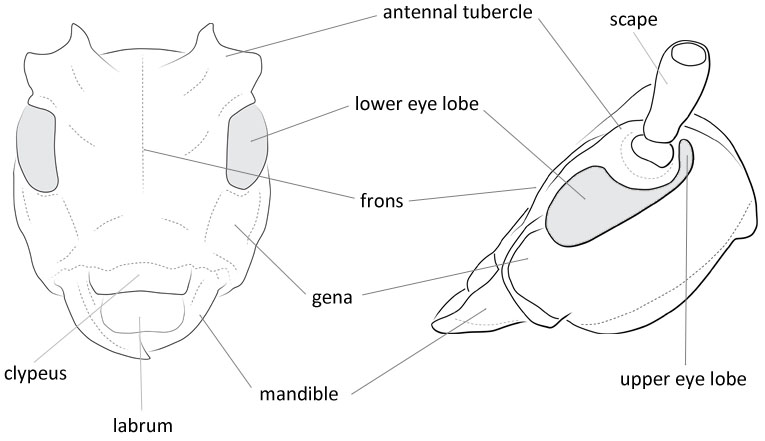 smooth/punctate at apexapex:
smooth/punctate at apexapex:
end of any structure distad to the base
, antennal scapescape:
the first proximal segment of the antenna ≥ segment 3 or segment 3 > scapescape:
≥ segment 3 or segment 3 > scapescape:
the first proximal segment of the antenna .
.
Pronotumpronotum:
the upper and dorsal part of the prothorax
: pronotumpronotum:
the upper and dorsal part of the prothorax
shape transversetransverse:
broader than long
, subquadratesubquadrate:
not quite a square
or longer than wide, pronotumpronotum:
the upper and dorsal part of the prothorax
lateral armature absent.
Prosternum: prosternal processprosternal process:
a posterior extension of the prosternum between the coxae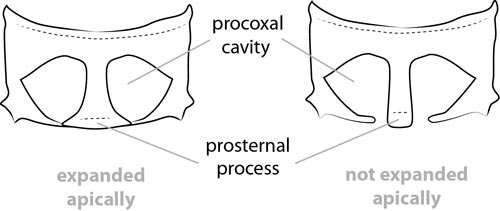 dilated at apexapex:
dilated at apexapex:
end of any structure distad to the base
, procoxal cavities open posteriorly, rarely closed posteriorly.
Elytraelytron:
the leathery forewing of beetles, serving as a covering for the hind wings, commonly meeting opposite elytron in a straight line down the middle of the dorsum in repose
: elytral length reaching or close to end of abdomen, elytral apicesapex:
end of any structure distad to the base
rounded or truncatetruncate:
cut off squarely at the tip
or with tooth or spinespine:
a protuberance with an acute (sharp) distal end
, elytral color pattern present.
Legs: visible tarsomerestarsomere:
subdivision or article of the tarsus, usually numbering from two to five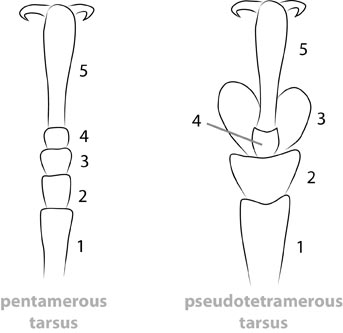 : 4, femora clavateclavate:
: 4, femora clavateclavate:
thickening gradually toward the tip
, slender or robust, protibial spursprotibial spur:
sclerotized spine(s) located at the distal tibia; can be single, double, or absent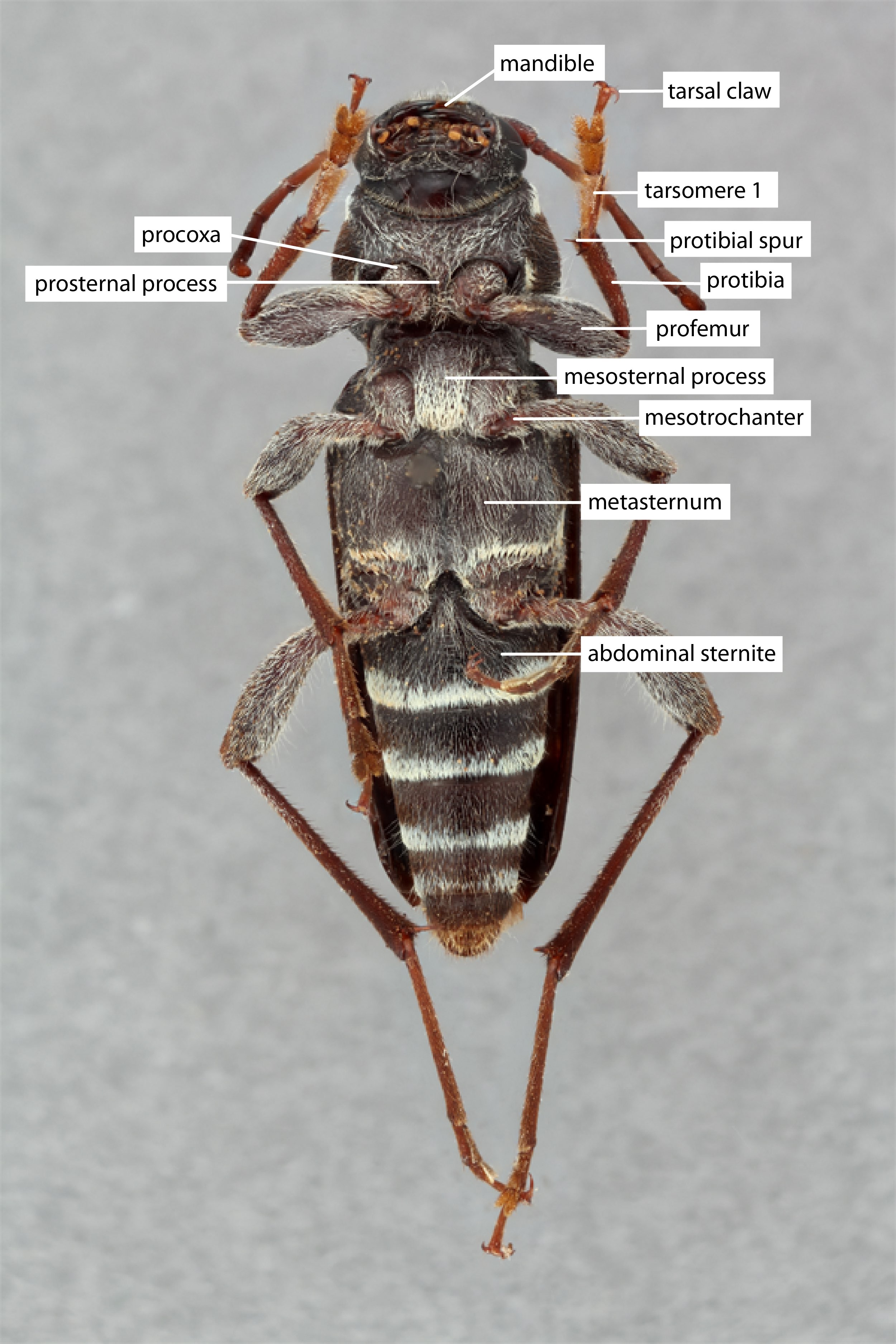 : 2, tarsal clawstarsal claw:
: 2, tarsal clawstarsal claw:
usually paired claws of the pretarsus, at the distal end of the leg simple.
simple.
Head with front declivous, bicarinate; antennaeantenna:
in larval and adult insects, paired segmented appendages, borne one on each side of the head, functioning as sense organs and bearing a large number of sensilla
short, filiformfiliform:
threadlike, i.e., slender and of equal diameter, being commonly applied to antennae
, segments not spinose. Pronotumpronotum:
the upper and dorsal part of the prothorax
usually broader than long, rounded, constricted at basebase:
the part of any appendage or structure that is nearest the body
, disk without large transversetransverse:
broader than long
carinaecarina:
an elevated ridge or keel, not necessarily high or acute
. Femora not spinosespinose:
armed with thorny spines, more elongate than echinate
. Elytraelytron:
the leathery forewing of beetles, serving as a covering for the hind wings, commonly meeting opposite elytron in a straight line down the middle of the dorsum in repose
narrowed gradually to apexapex:
end of any structure distad to the base
, apicesapex:
end of any structure distad to the base
rounded or tr uncateuncate:
hooked; barbed
(Linsley 1964Linsley 1964:
Linsley EG. 1964. The Cerambycidae of North America. Part V. Taxonomy and Classification of the Subfamily Cerambycinae, Tribes Callichromini Through Ancylocerini. University of California Publications in Entomology, Vol. 22. 197 pp.). Antennaeantenna:
in larval and adult insects, paired segmented appendages, borne one on each side of the head, functioning as sense organs and bearing a large number of sensilla
more or less distantly inserted, intervening space fairly even; metepisternummetepisternum:
the episternal portion of the pleuron on the posterior thoracic segment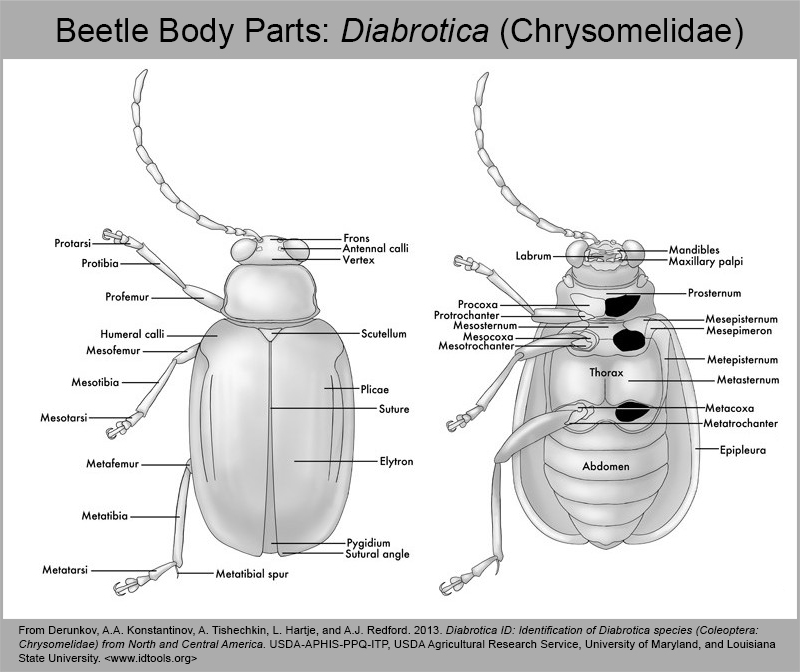 broad, 2-3 times as long as broad (Gressitt 1951Gressitt 1951:
broad, 2-3 times as long as broad (Gressitt 1951Gressitt 1951:
Gressitt JL. 1951. Longicorn beetles of China. Longicornia, Paris 2: 1–667, 22 pls.)
Adults are recognizable by the strongly bicarinate fronsfrons:
the upper anterior portion of the head capsule, usually a distinct sclerite between the epicranium and clypeus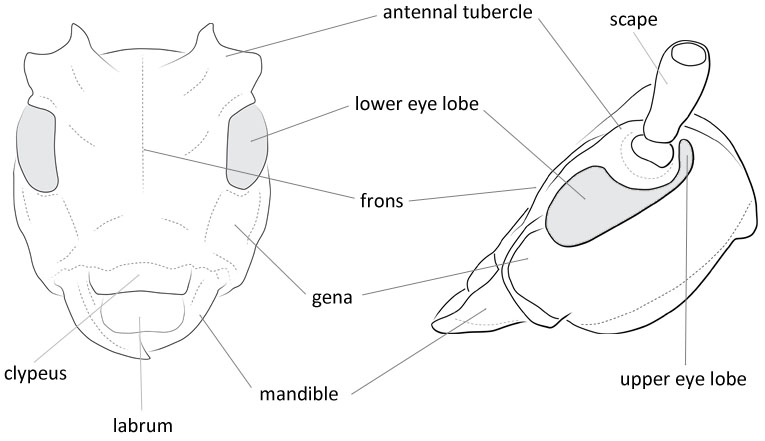 , the carinaecarina:
, the carinaecarina:
an elevated ridge or keel, not necessarily high or acute
frequently forming a Y-shape. The larvae are legless and usually have the posterior part of the pronotumpronotum:
the upper and dorsal part of the prothorax
velvety pubescentpubescent:
downy; clothed with soft, short, fine, loosely set hair
.
New World: North America
Old World: all
broadleaf; Pinaceae
(Xylotrechus) 205 species; (Kostiniclytus) 6 spp.; (Ootora) 5 spp.; (Rusticoclytus) 6 spp.; (Xyloclytus) 4 spp.; (Turanoclytus) 5 spp. Conifer feeding: X. (Xylotrechus) sagittatus, X. (X.) cuneipennis, X. (X.) albonotatus, X. (X.) bowditchi, X. (X.) integer, X. (X.) lengi, X. (X.) undulatus, X. (X.) schaefferi (cone feeding), X. (Ootora) villioni, X. (Xyloclytus) altaicus.
Clytomorphus Hellrigl, 1974
Subgenus Xylotrechus Chevrolat, 1860
Subgenus Kostiniclytus Danilevsky, 2009
Subgenus Ootora Niisato & Wakejima, 2008
Subgenus Rusticoclytus Vives, 1977
Subgenus Xyloclytus Reitter, 1912
Subgenus Turanoclytus Özdikmen, Bolu & Çelik, 2021